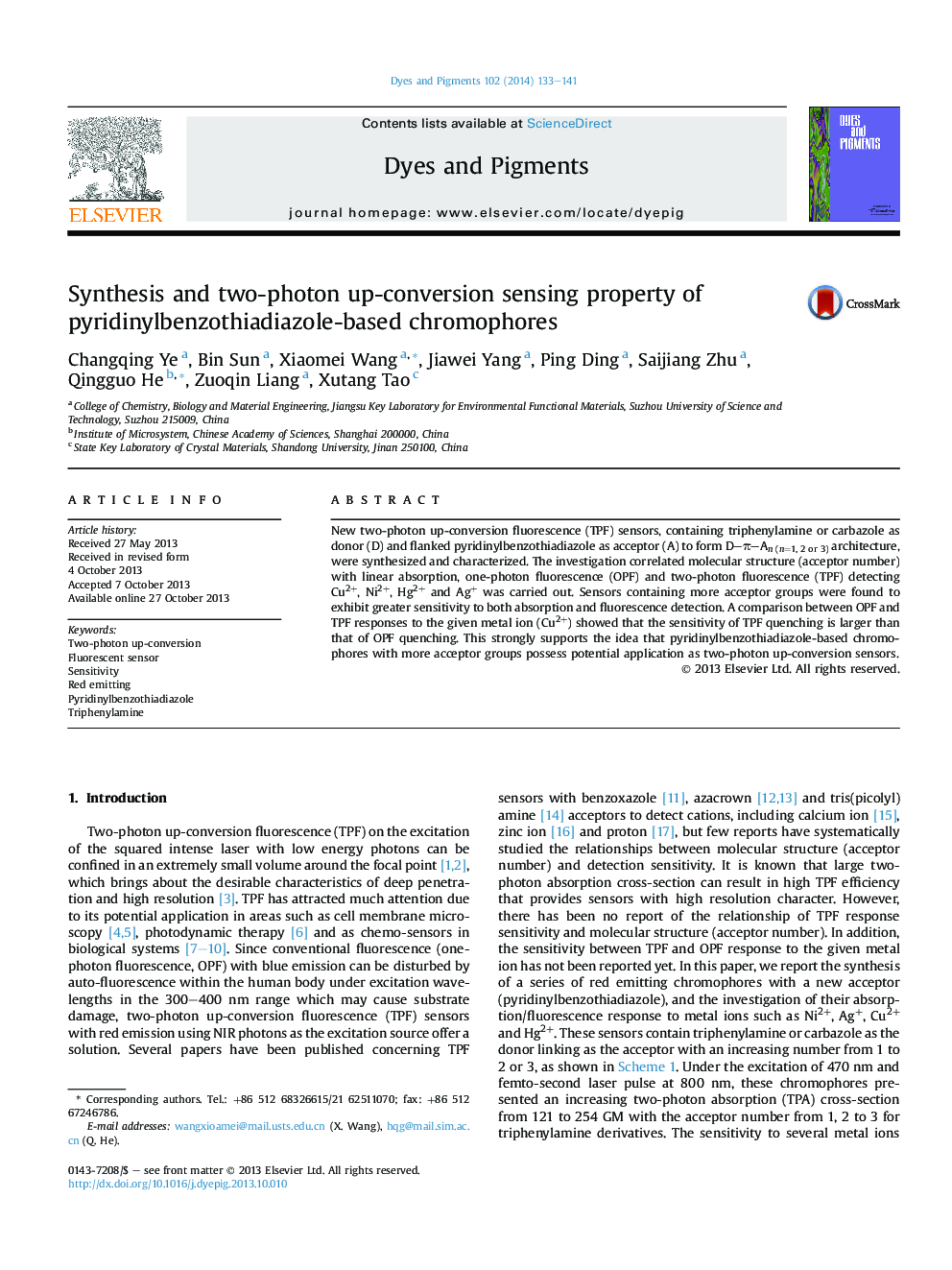| کد مقاله | کد نشریه | سال انتشار | مقاله انگلیسی | نسخه تمام متن |
|---|---|---|---|---|
| 176177 | 458936 | 2014 | 9 صفحه PDF | دانلود رایگان |
• A series of chromophores were synthesized with acceptors of pyridinylbenzothiadiazole.
• The chromophores present two-photon absorption cross-section from 121 to 254 GM.
• The two-photon fluorescence quenching to the metal ions is sensitive.
• Showing potential application in heavy metal detecting or environmental sensor.
New two-photon up-conversion fluorescence (TPF) sensors, containing triphenylamine or carbazole as donor (D) and flanked pyridinylbenzothiadiazole as acceptor (A) to form D–π–An(n=1, 2 or 3) architecture, were synthesized and characterized. The investigation correlated molecular structure (acceptor number) with linear absorption, one-photon fluorescence (OPF) and two-photon fluorescence (TPF) detecting Cu2+, Ni2+, Hg2+ and Ag+ was carried out. Sensors containing more acceptor groups were found to exhibit greater sensitivity to both absorption and fluorescence detection. A comparison between OPF and TPF responses to the given metal ion (Cu2+) showed that the sensitivity of TPF quenching is larger than that of OPF quenching. This strongly supports the idea that pyridinylbenzothiadiazole-based chromophores with more acceptor groups possess potential application as two-photon up-conversion sensors.
Journal: Dyes and Pigments - Volume 102, March 2014, Pages 133–141
